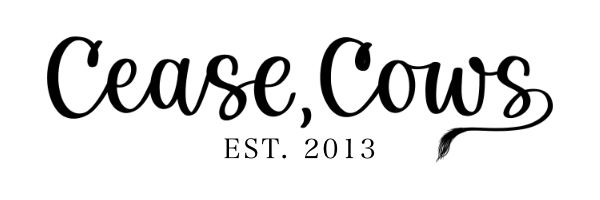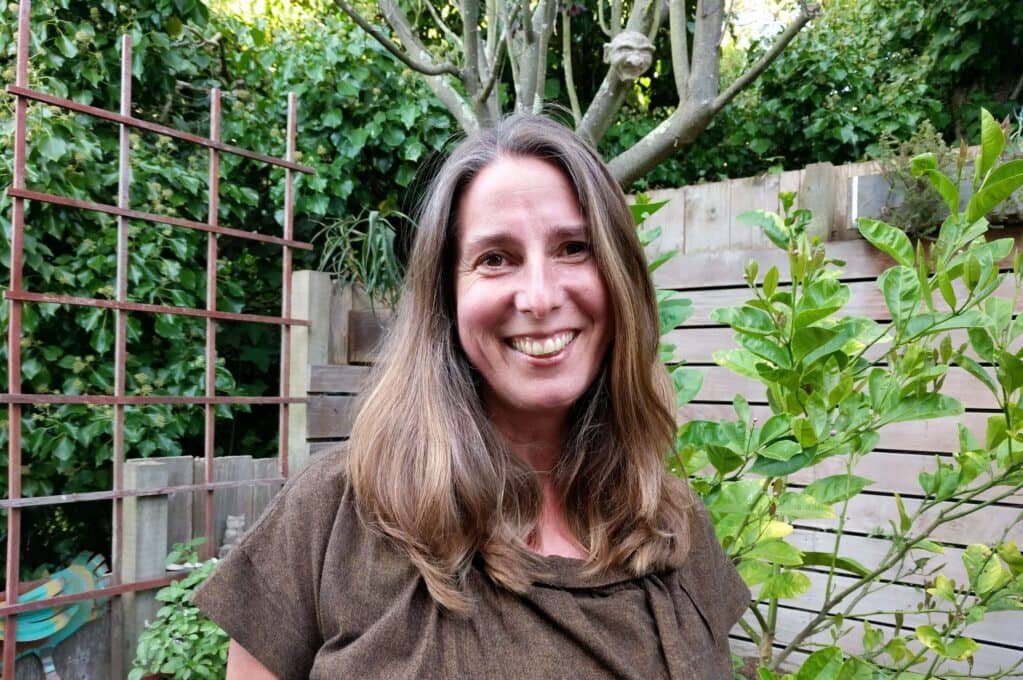Kim Magowan is no stranger to Cease, Cows. Her story “The Rascally Rabbit” was featured last year, and we recently spoke with her about her story collection, Undoing. Now Kim is back with her first novel, The Light Source, which traces the lives of two women over several decades. It’s a moving story featuring vivid characters who develop over time. By the end of the novel, we know them well and appreciate the journey.
Purchase your copy here.
Magowan recently shared her thoughts with Cease, Cows.
Chuck Augello: At the heart of your new novel, The Light Source, are two characters: Heather and Julie. Tell us about them.
Kim Magowan: Heather is something of a provocateur, “a controversial figure,” as Julie calls her. She’s honest, passionate, and destructive. She’s also very loyal. She falls in love young, and has great fidelity (emotionally, anyway) to that love object. She grows up the most; Heather’s character has the steepest arc. She’s my favorite character, though it’s probably akin to parenting—I’m not supposed to have a favorite! Forget I said that.
Julie is reserved, cautious, and overly invested in what others think of her. This causes her quite a bit of grief—worrying about how she’s seen, taking pains (I use “pains” deliberately) to craft that perception. For all her intelligence, she’s adept at lying to herself. I’m fond of Julie too, though I suspect that my feelings towards her are similar to what Jane Austen said about her protagonist Emma Woodhouse: Austen claimed she’d written a character “whom nobody but myself will much like.”
CA: What was the initial inspiration for the story? Was there an “a-ha” moment in which you realized you had the makings of a novel?
KM: The germ of the story came from a wedding a friend attended. The bride cancelled the wedding at the last minute, after walking in on her groom and her maid of honor in bed together. I was fascinated by the maid of honor’s behavior. Why would anyone sleep with their best friend’s fiancé? It seemed like such an irrational, horrible thing to do. The answer I arrived at (which felt to me very “well, duh” once it occurred to me) is the seed of the whole novel. As far as when I realized I was working on a novel, I was very resistant to that fact! I was in denial for years—I thought I was writing a collection of linked stories. Writing a novel felt too daunting. But the stories became increasingly intertwined, and increasingly incapable of functioning as stand-alone pieces, flopping messily all over each other. Eventually I had to face facts.
CA: The story is told through multiple narrators. Why did you choose this approach rather than a single voice? What were some of the challenges of writing in different voices?
KM: Well, a main concern of my novel is perspective. Different narrators seemed to be the best and most efficient way of tackling the fact that everyone has their own point of view, and often those points of view jar and conflict. The challenge was individuating various characters’ voices, making each narrator seem sufficiently distinct and “real.”
CA: We spoke previously about your story collection, Undoing. It’s a bit of a stock question, but I’ll ask it anyway. How is writing a novel different from writing short stories? Do you prefer one to the other?
KM: Novels are so much harder to revise! In general I’m a baby about revision, and revising the novel felt like sticking pins in my eyes. With a short story collection, if I had concerns about a story I could pull it. With a novel, you’re forced to figure out how to fix the problem. You can’t simply chuck a chapter. It felt like this science project my fifth grader had to do last year—making a load-bearing bridge out of popsicle sticks. Short stories are easier to perfect. As a reader, I equally love novels and short stories, though they appeal to different moods—I go to novels for immersion, short stories for artful craft. As a writer, though, I find short stories much easier to tackle.
CA: The Light Source follows its characters over several decades. What are some of the challenges of showing characters through time?
KM: I wanted characters to believably inhabit their ages—so, to behave like a 24 year old, and later like a 43 year old. I needed to fact check to make sure that my memories of 1994 were accurate, and that I didn’t have accidental anachronisms (for instance, checking the dates of that “I’ve fallen down and can’t get up” LifeCall ad, or the Guess How Much I Love You picture book). But mostly it was pleasurable to show characters growing up, finally maturing. Heather has to change significantly when she becomes a mother; Julie is much more blunt and assertive at 37 than 24. I enjoyed watching characters settle into their skins (I realize “watching” is a weird verb to use, considering I wrote the characters, but it felt like I was watching them and taking meticulous notes).
CA: You mentioned the challenges of revision. How did you know that The Light Source was finally done?
KM: Ugh, is it done? I never feel confident that something is complete. My dissertation chair practically had to pry my dissertation out of my hands, and I only turned it in because I had a job, so I needed to graduate. I am lucky to have a superb editor and publisher in Leland Cheuk. Leland proclaimed it done; I was happy to stop messing with it.
CA: In addition to novelist and short story writer, you’re also the Fiction Editor for Pithead Chapel. How does that role influence your work as a writer?
KM: I bet you have a similar experience, Chuck, but mostly for me fiction editing permits a firsthand look at how many excellent stories are out there—far, far more than we have room to publish. I see how subjective and random the process is—we turn down really great stories all the time, stories I know full well are publishable. So I suppose fiction editing allows me to treat getting my own work rejected with much more equanimity (I’ve always taken rejections far too much too heart, I’m badly wired that way). And it’s thrilling, of course, to find some gem in the slush pile and send an acceptance. When one of our authors got a story in The Best Small Fictions this year, I was just as delighted for him—in some ways more so—than I was for my own self.
CA: Do you have a favorite novel? Were there particular writers whose work was important to you while you were writing The Light Source?
KM: I’d say it’s a three-way toss-up between Middlemarch, Absalom, Absalom!, and Emma. Beloved and Lolita are probably next in line. As far as what books were important to me while I was writing—no one would likely guess this, it’s such a beautifully stitched, subtle book compared to mine, Anne Elliot is nothing like my Heather Katchadourian—but one novel that kept floating into my mind was Jane Austen’s Persuasion. It’s her most romantic novel, and something about that steadfast love that persists over time and loses none of its dynamic energy, despite being hopeless, reminded me of Heather.
CA: Finally, what’s next for Kim Magowan?
KM: I’m working on two projects, and (knock wood! I’m afraid to even say this aloud!), I think they are both very nearly done. My writing partner, the brilliant Michelle Ross, and I have been collaborating on short stories for two years, and we have (dare I say!?) a book. Well, a book sized thing: it’s over 50,000 words. But we have to order all the stories, and that will take us a spell. I’ve also been working on my own second story collection, mostly flash fiction, and that is now also very close to book-length, though sequencing that collection is going to kill me (35 stories and counting). So… short stories. Shuttling between revising a novel and writing flash fiction has been like moving from a marathon to sprints. I feel breathless.
–
Chuck Augello (Contributing Editor) lives in New Jersey with his wife, dog, two cats, and several cows that refuse to cease. His work has appeared in One Story, Juked, Hobart, SmokeLong Quarterly, and other fine places. He publishes The Daily Vonnegut and contributes interviews to The Review Review. He’s currently at work on a novel.
Kim Magowan is the author of Undoing (2018), which won the 2017 Moon City Press Fiction Award. Her fiction has been published in Atticus Review, Cleaver, The Gettysburg Review, Hobart, New World Writing, SmokeLong Quarterly, and many other journals. She is the Fiction Editor of Pithead Chapel. She lives in San Francisco and teaches in the Department of Literatures and Languages at Mills College. You can find her on Twitter (@kimmagowan) or read more of her work at www.kimmagowan.com.

